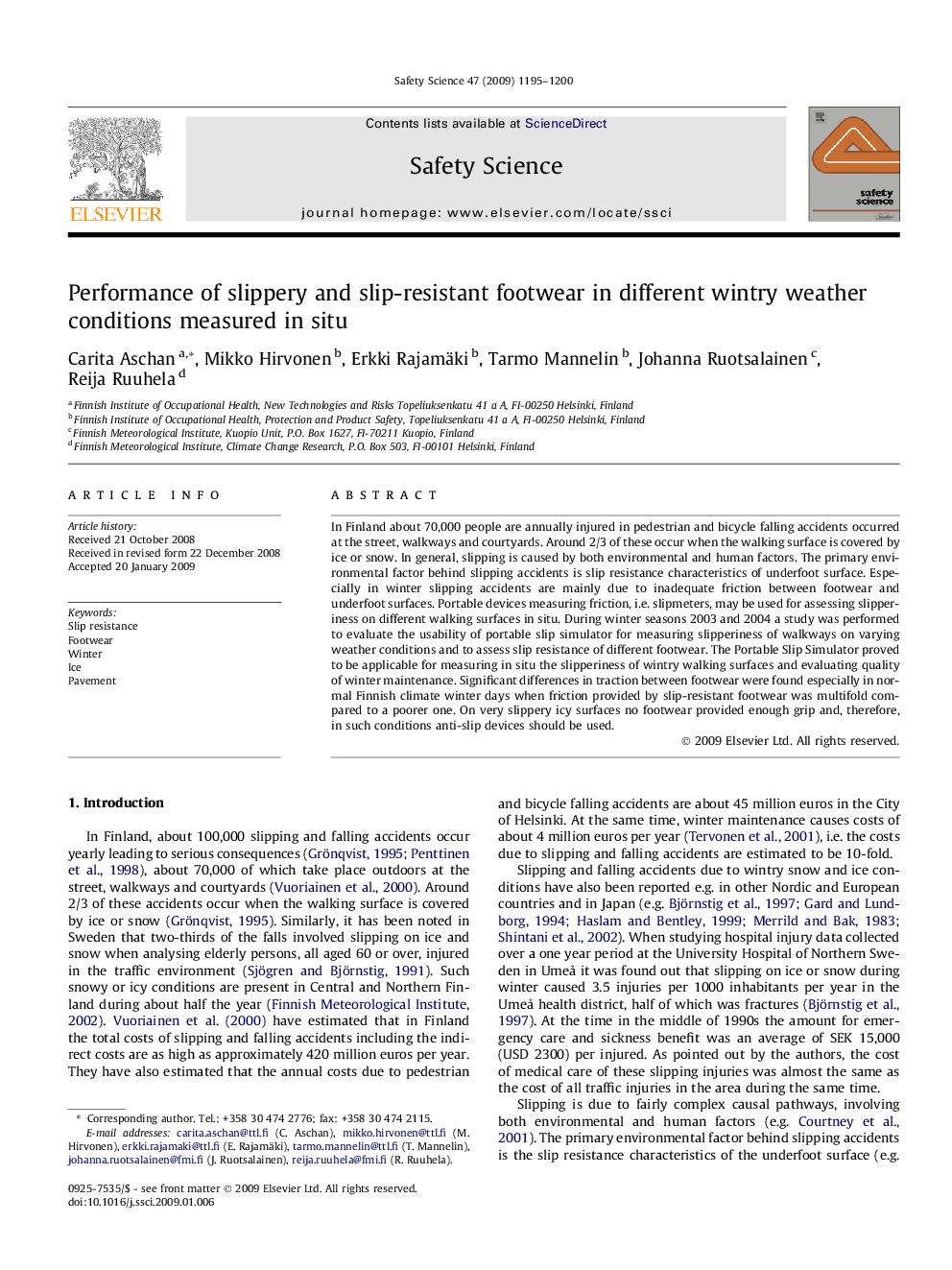| Article ID | Journal | Published Year | Pages | File Type |
|---|---|---|---|---|
| 589993 | Safety Science | 2009 | 6 Pages |
Abstract
In Finland about 70,000 people are annually injured in pedestrian and bicycle falling accidents occurred at the street, walkways and courtyards. Around 2/3 of these occur when the walking surface is covered by ice or snow. In general, slipping is caused by both environmental and human factors. The primary environmental factor behind slipping accidents is slip resistance characteristics of underfoot surface. Especially in winter slipping accidents are mainly due to inadequate friction between footwear and underfoot surfaces. Portable devices measuring friction, i.e. slipmeters, may be used for assessing slipperiness on different walking surfaces in situ. During winter seasons 2003 and 2004 a study was performed to evaluate the usability of portable slip simulator for measuring slipperiness of walkways on varying weather conditions and to assess slip resistance of different footwear. The Portable Slip Simulator proved to be applicable for measuring in situ the slipperiness of wintry walking surfaces and evaluating quality of winter maintenance. Significant differences in traction between footwear were found especially in normal Finnish climate winter days when friction provided by slip-resistant footwear was multifold compared to a poorer one. On very slippery icy surfaces no footwear provided enough grip and, therefore, in such conditions anti-slip devices should be used.
Related Topics
Physical Sciences and Engineering
Chemical Engineering
Chemical Health and Safety
Authors
Carita Aschan, Mikko Hirvonen, Erkki Rajamäki, Tarmo Mannelin, Johanna Ruotsalainen, Reija Ruuhela,
